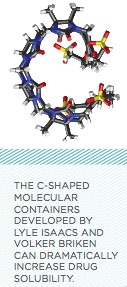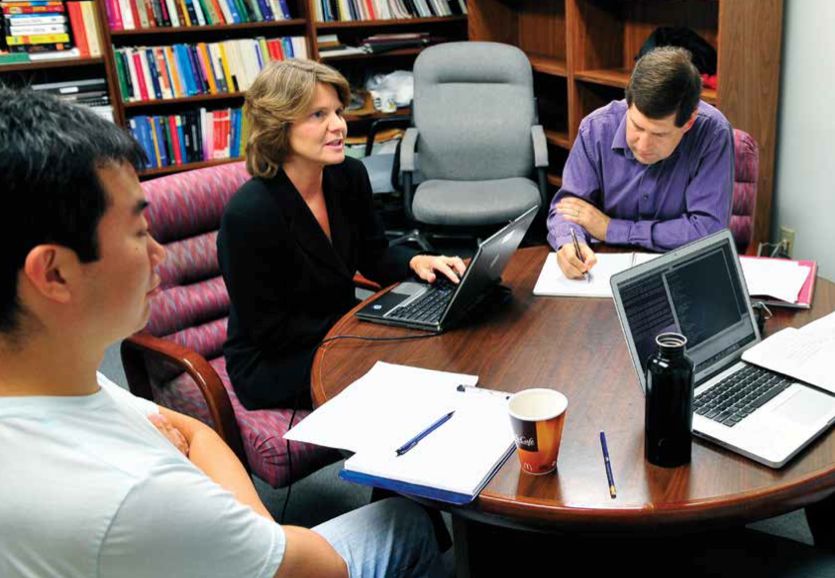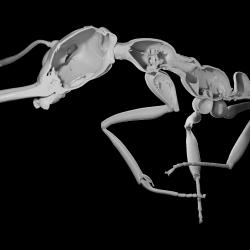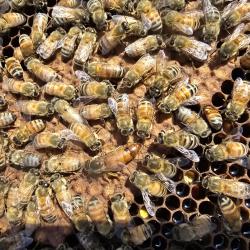From Research to Market
It is no surprise that a new U.S. Chamber of Commerce report names Maryland the top state in the nation for innovation and entrepreneurship. For its part, the university generates about 130 invention disclosures each year, or close to one every three days. Throughout the university, including the classrooms, research labs, centers and institutes of the College of Computer, Mathematical, and Natural Sciences (CMNS), researchers are combining scientific and technical know-how with business savvy to develop products and services that have the capacity to improve the lives of people throughout the world.
“This national recognition reflects the efforts of the governor and general assembly to promote innovation across the state, the tireless work of the state’s successful businesses and entrepreneurs, as well as the university’s dedication to creating a culture of entrepreneurship among our faculty, students and alumni,” says University of Maryland Vice President and Chief Research Officer Patrick O’Shea. The number one ranking is a significant improvement over last year—Maryland ranked seventh in 2011.
Broadening the University’s Innovation Impact
The university has supported hundreds, if not thousands, of research advancements, but university President Wallace Loh believes it can do even more to foster innovations that can enhance lives as well as boost job creation. “A great university in the 21st century has to be more than a great research university,” Loh wrote recently in the university’s Terp magazine. “It must also be an innovation and entrepreneurship university. It has to translate ideas to impact.”
To that end, the College Park campus forged a strategic partnership with the University of Maryland, Baltimore this spring. Known as MPowering the State, the agreement leverages the expertise of each institution, encouraging collaborations between College Park researchers and Baltimore clinicians that could lead to new discoveries in areas such as bioinformatics and biomedical devices. The agreement also combines technology transfer and commercialization efforts at the institutions through the creation of a unified University of Maryland Ventures program.
Faculty researchers can now benefit in other ways from their innovations. The University System of Maryland (USM) will soon count patents and commercialization toward tenure and promotion decisions. In 2010, USM set a 10-year goal to create 325 companies based on academic research or aided by university economic development programs.
The university is also launching an initiative to make innovation and entrepreneurship a signature feature of the curriculum university- wide. The Innovation Academy at the University of Maryland promises to foster and enhance innovative thinking, entrepreneurship and creativity through programs that cross all disciplines.
All of the initiatives will contribute to a single goal: to create tomorrow’s innovators, who will “solve the grand challenges of our era,” according to Loh. Among the most pressing areas of concern: healthcare, sustainable energy, technology and agriculture.
“Our mission at CMNS is perfectly aligned with the direction the university is taking,” affirms CMNS Dean Jayanth Banavar. “The college’s multidisciplinary approach to problem solving, evidenced by the ever- growing number of collaborative research projects, allows us to bring together the best minds across disciplines to create viable options for solving many of society’s critical problems.”
Healthcare: Developing Medical Advances
Deciphering the Mysteries of Aging
Sometimes scientific breakthroughs happen in the most unexpected ways—like when you are on vacation thousands of miles from your lab. Just ask Assistant Professor of Cell Biology and Molecular Genetics Kan Cao whose research focuses on the premature aging disorder Hutchinson-Gilford Progeria Syndrome (HGPS). Children with HGPS die in their early teens, typically due to heart attack or stroke. The rare disease is caused by a mutation in the gene LMNA.
In 2009, while still a postdoctoral researcher at the National Institutes of Health, Cao headed to China for a three-week break, tasking a student researcher with feeding HGPS cells with the immunosuppressant drug rapamycin. “I figured it would be a good practice exercise,” says Cao. After three weeks, the cells began to improve, indicating that the drug might offer effective treatment. Cao continued the research after her CMNS appointment in 2010, publishing a groundbreaking paper on the effect of rapamycin on HGPS cells, and clinical trials are planned for the drug.
While Cao has her eyes on finding a cure for HGPS, her research could have far greater implications. “If we understand why the lamin A protein, produced from LMNA, causes such a drastic disease,” says Cao, “it can help us decipher many, many mysteries of aging, including cardiovascular disease.”
Expanding Pharmaceutical Possibilities
A CMNS research team has developed a way to make pharmaceuticals dissolve more quickly in the human body, paving the way for a host of new treatments. “About 40 to 70 percent of potential new drugs fail because they have low solubility in water,” says Chemistry and Biochemistry Professor Lyle Isaacs, who is co-leading the interdisciplinary project with Associate Professor of Cell Biology and Molecular Genetics Volker Briken.
The Maryland team created C- shaped molecular containers that can flex to accommodate different phar maceutical molecules. The containers increased the solubility of previously insoluble drugs up to 2,750 times, and tests indicate that the containers are especially effective delivering anti-cancer treatments. Isaacs had been researching molecular containers, known as cucurbiturils, for nearly a decade when Briken approached him about adapting them for drug delivery. Says Isaacs, “This is a great example of collaboration between a chemist and a biologist making progress that would not be possible on our own.”
Briken notes that “we already are working with drug companies to test the use of the containers to deliver select drugs and hope to interest them in licensing our technology.” The university’s Office of Technology Commercialization has been instrumental in this process, helping the researchers apply for two patents. Grants from the Maryland Technology Development Corporation and the Maryland Department of Business and Economic Development help fund the research.
Sustainable Energy: Creating a Better Power Source
Tiny nanostructures could have a big impact on the electric car industry, thanks to an energy storage system developed through a cross-campus collaboration. Chemistry and Biochemistry Associate Professor Sang Bok Lee teamed up with Materials and Science Engineering Professor Gary Rubloff to build a supercapacitor, a high-power energy storage system that could reduce the costs of electric cars while extending how far they can travel without recharging.
Supercapacitors offer the ability to be recharged almost instantly. They can also discharge energy more quickly than traditional lithium batteries, making them ideal when energy bursts are needed for acceleration and uphill drives. Unlike batteries, the devices do not lose their ability to store charge with age, but they store much less energy than batteries.
Now, Lee and Rubloff have developed a supercapacitor that offers 10 times more capacity than current ones by using metallic nano- structure arrays. Combining Lee’s nanofabrication techniques with Rubloff ’s expertise in atomic layer deposition, the researchers built a device with millions of virtually identical nano-size pores. These microscopic pores increase the surface area for electrically charged ions, vastly improving storage capacity. The researchers plan to launch a company to bring their product to market, and have already filed a patent application on the technology.
The innovation could help energize the electric car industry. When combined with a traditional battery, the nano-array super- capacitor promises to fuel a car further before recharging is needed, making electric cars even more attractive to consumers. Eventually, the supercapacitors could emerge as primary energy sources. “I like to think about how our research contributes not only to science but also to technology,” says Lee. “How can it make an impact in our everyday lives?”
Technology: Pioneering Language Translation
When the military’s research arm needed a new program manager last year to shepherd its projects in human language technology, officials at the Defense Advanced Research Projects Agency (DARPA) turned to Professor Bonnie Dorr, Computer Science and the University of Maryland Institute for Advanced Computer Studies. Former co-director of the university’s Computational Linguistics and Information Processing Laboratory (CLIP), Dorr has led the development of numerous technologies that translate and summarize written and oral communications, essential research for U.S. Department of Defense (DOD) strategic operations worldwide.
Dorr specializes in semantically informed machine translation. “The goal is to get a machine to truly understand language rather than just give a word-for-word translation that can be stilted or inaccurate,” she explains.
In 2009, with colleagues from Johns Hopkins University, Dorr led the development of a system that translates Pakistan’s Urdu language to English. She also worked on DARPA’s Global Autonomous Language Exploitation program, helping to develop software that analyzes and interprets huge volumes of speech and text in multiple languages. In addition, with her doctoral students, Dorr created Topiary, a summarizer that distills information, and the Translation Edit Rate Plus (TERp), an automatic evaluation metric for machine translation.
On leave at DARPA, Dorr is excited to oversee the next generation of machine translation through initiatives like the Broad Operational Language Translation program, which focuses on getting computers to translate more intelligently, and the Deep Exploration and Filtering of Text program, which is developing the technology to infer unstated information and understand other language nuances. “No matter how many skilled human translators the Department of Defense hires, there is always a need for technology to support world- wide operations,” says Dorr. “These sophisticated technologies help us sift through an endless stream of documents in search of information critical to national security efforts.”
Agriculture: Helping Organic Farmers Reap Awards
An interdisciplinary research team is growing much more than eggplants and bell peppers at a university farm in Upper Marlboro, Md. New soil- management practices for organic farming are also blooming. Among their organic research projects is a three-year grant from the U.S. Department of Agriculture National Institute of Food and Agriculture. The scientists are examining how different tillage systems affect crop profitability, soil quality and health, weed containment, pest dynamics and greenhouse gas emissions.
Researchers include Assistant Professor of Entomology Cerruti RR Hooks, whose work with growers has broadened his understanding of their day-to-day practices and concerns. “Farmers typically till the soil to prepare for the new vegetable growing season. To the soil’s beneficial organisms, that tillage is like a disruptive earthquake and other natural disasters all happening at once,” explains Hooks. “We want to develop a system that will conserve the nutrient-cycling organisms underground while preventing pest and weeds above the soil surface.”
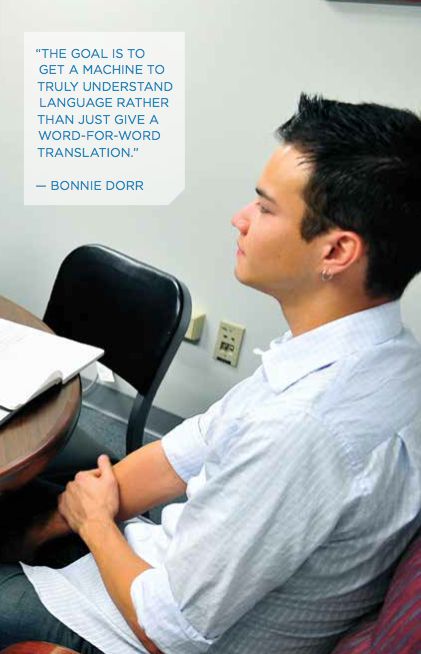 Creation of that system involves a comparison of a conventional tillage system to no-tillage and reduced-tillage systems. In each case, cover crops are planted because of their beneficial impacts on soil organisms, nutrients and the environment. Their findings will help answer an important stakeholder question: What tillage system type
is best to manage the remains of these cover crops when it comes time to plant cash crops? Ultimately, the scientists hope to provide organic farmers with best-management practices that are productive, profitable and environmentally sound.
Creation of that system involves a comparison of a conventional tillage system to no-tillage and reduced-tillage systems. In each case, cover crops are planted because of their beneficial impacts on soil organisms, nutrients and the environment. Their findings will help answer an important stakeholder question: What tillage system type
is best to manage the remains of these cover crops when it comes time to plant cash crops? Ultimately, the scientists hope to provide organic farmers with best-management practices that are productive, profitable and environmentally sound.
The research is a collaborative effort with the College of Agriculture and Natural Resources, including Environmental Science and Technology Professor Ray Weil, an expert in using forage radish as a cover crop, and the University of Hawaii at Manoa, the University of Maryland Eastern Shore, and the Department of Agriculture. Hooks has also assembled a dream team of postdoctoral researchers: project leader Lauren Kolb, a specialist in weed science; Mariam Lekveishvili, an expert on mites, used with other organisms as indicators of soil health; and Guihua Chen, an accomplished scientist with expertise in soil quality and greenhouse gas emissions.



